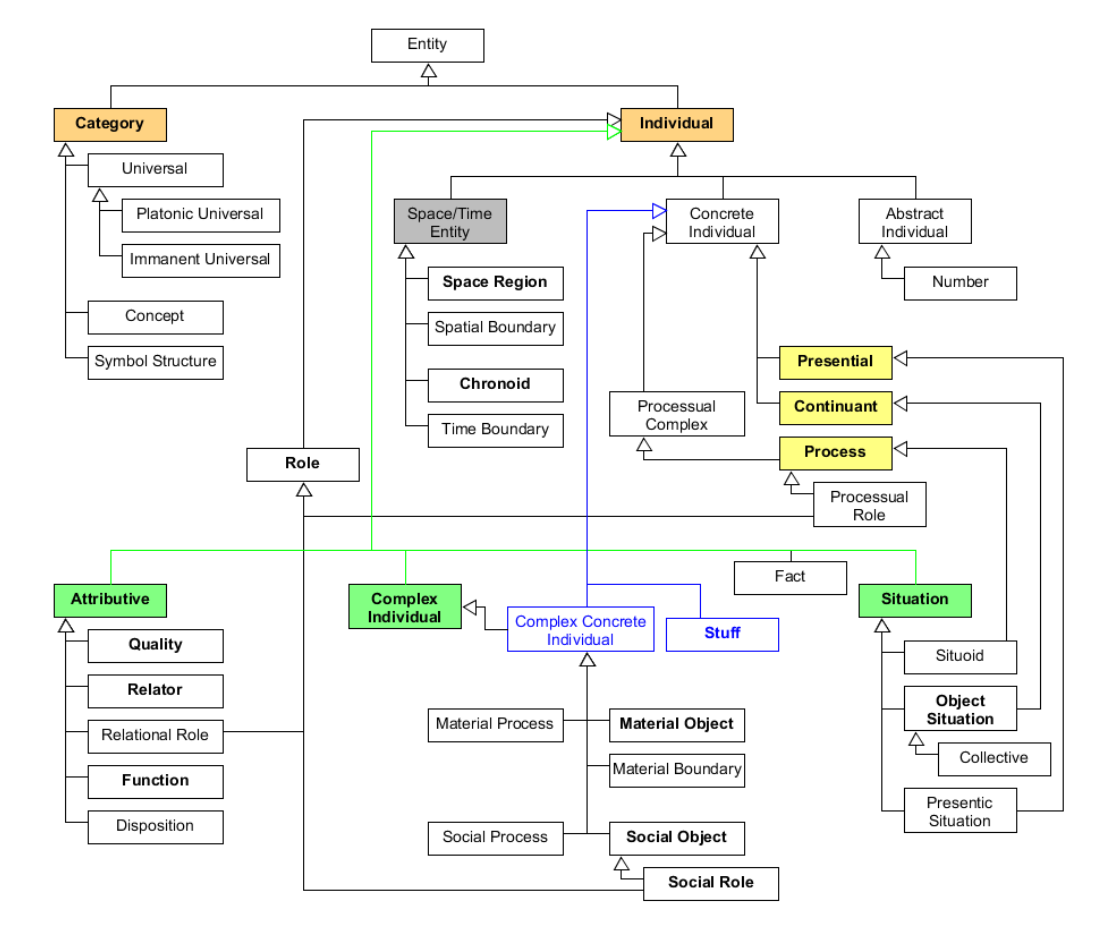GFO
- https://onto-med.github.io/GFO/release/latest/index-en.html
- url:
- repo:
- related: GOL
 (heterarchy with multiple inheritance)
(heterarchy with multiple inheritance)
Issues
- aren't "material processes" and "social processes" still processes?
- fine line between categories and attributives
- "Categories provide the basic structure of the ontology, defining what kinds of things exist, whereas attributives are used to describe specific qualities or features of these things."
OWL
There is an OWL version of GFO, which currently comprises a stable core called gfo-basic.owl and a more extensive version called gfo.owl. The stable URLs to the current releases of these files are:
http://www.onto-med.de/ontologies/gfo-basic.owl
(version 1.0, build 13, 07.10.2008)
http://www.onto-med.de/ontologies/gfo.owl
(version 1.0, build 9, 28.08.2006)
Features
- coherent integration of objects and processes (based on a novel category of persistants)
- time and space entities as entities sui generis, and the relation of coincidence
- a category of situoids, comprehensible wholes of the most independent character
- elaborate accounts of functions and roles
- openness regarding philosophical positions such as realism, conceptualism, or nominalism by the provision of different kinds of categories as universals, concepts, or symbolic structures
- levels of reality and ontological regions
- three-layered meta-ontological architecture consisting of an abstract top level, an abstract core level, and a basic level.
Concepts, Symbol Structures, and Platonic and Immanent Universals
- @gemini.1.5.advanced GFO accounts for different philosophical stances: It accommodates those who believe in the real existence of universals outside of minds (realism), those who view them as primarily mental (conceptualism), and those who emphasize representations (nominalism).
Resources
References
- GFO: the General Formal Ontology
- Towards GFO 2.0: Architecture, Modules and Applications
- http://www.thezfiles.co.za/ROMULUS/ontologicalCommitments.html
- Towards Ontological Foundations for Conceptual Modeling the Unified Foundational Ontology Ufo Story
- Towards a New Foundational Ontology of Properties Attributives and Data
- Developing Gfo 2.0 Further Initiating the Modules of Space and Material Objects
- Gfo Users Gfo Presential Persistent Perpetuant
- General Formal Ontology Gfo a Foundational Ontology Integrating Objects and Processes
Children
Backlinks
- Axiomatic Theories of the Ontology of Time in Gfo
- Foundational Ontologies in Action
- GFO: the General Formal Ontology
- Roles and Their Three Facets a Foundational Perspective
- Some Open Issues after Twenty Years of Formal Ontology
- Towards GFO 2.0: Architecture, Modules and Applications
- Towards Ontological Foundations for Agent Modeling Concepts Using Ufo
- Unified Foundational Ontology
- Dolce Vs Ufo Vs Gfo Vs Sumo
- Ontology